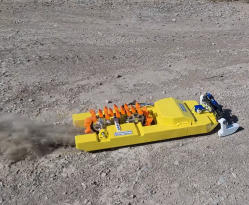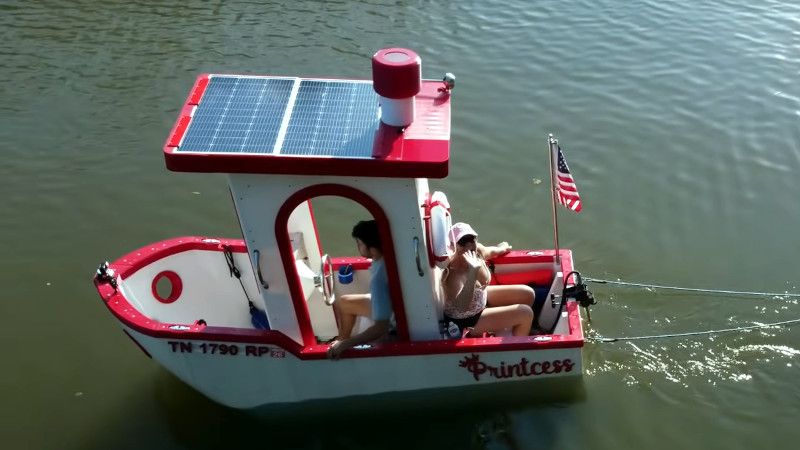3D Printed Boat Uses Tank Tracks For Amphibious Propulsion

Boats normally get around with propellers or water jets for propulsion. Occasionally, they use paddles. [Engineering After Hours] claims he is “changing the boat game forever” with his new 3D printed boat design that uses a tank tread for propulsion instead. Forgive him for the hyperbole of the YouTuber. It’s basically a modified paddle design, but it’s also pretty cool.

The basic idea is simple enough—think “floating snowmobile” and you’re in the ballpark. In the water, the chunky tank track provides forward propulsion with its paddle-like treads. It’s not that much different from a paddle wheel steamer. However, where it diverges is that it’s more flexible than a traditional paddle wheel.
The tracked design is actually pretty good at propelling the boat in shallow water without getting stuck. In fact, it works pretty well on dirt, too! The video covers the basic concept, but it also goes into some detail regarding optimizing the design, too. Getting the float and track geometry right is key to performance, after all.
If you’re looking to build an oddball amphibious craft, maybe working with the snowmobile concept is worth your engineering time.
